There are some years that are known, for some strange coincidence of circumstances or another, as the year in which a number of great classic movies were released. The most notable example is probably 1939, the year that such classic movies as The Wizard of Oz, Gone With the Wind, Stagecoach, The Women and The Hunchback of Notre Dame hit movie screens. Or, another example might be that Jaws, Nashville, Dog Day Afternoon, One Flew Over The Cuckoos Nest and Barry Lydon were all released in 1975.
But what about a year when many classic films from one specific genre all came out at the same time? That year was 1982 and the genre was Science Fiction and Fantasy.
Not long ago, in the course of my research for many of my other blog entries, I started to notice something. I saw that a great many of films released in 1982 were classic, cult, influential or really good (and, in some cases, all of the above) science fiction and fantasy movies. I had come across this coincidence once or twice before but it was not unit I saw all the SF/Fantasy releases of '82 lined up back to back that the true significances of the year really hit me.
1982 is arguably the year that the SF/Fantasy genre really came into its own both in terms of its cinematic aesthetic and as a viable source of assured box office success.
By the early 80's, there had already been a number of creatively and commercially successful SF/Fantasy films: Star Wars, Close Encounters of the Third Kind, Alien, The Empire Strikes Back, two Superman movies, the first Star Trek movie and (if you count it as part of the genre) Raiders of the Lost Ark, to name a few. The genre was finally breaking free of its previous status of being confined to schlocky low budget B-movies and "silly kids stuff".
It was also an era were visual effects were coming into their own, particularly in the fields of matte technology, stop-motion animation, prosthetic make-up, animatronics and perhaps most importantly, in the still nascent craft of Computer Generated Images or (as it would become popularly known years later) CGI.
Another factor new to the movie biz in '82 was the emergence of home video. Many of the that year's SF/Fantasy movies ended up finding a bigger audience on video than they ever did in their original theatrical release (remarkably bigger, in some cases).
The SF/Fantasy movies of 1982 took all those factors to next level and beyond; the genre would never be the same again. Take a look at the SF/Fantasy movies that entered the world of cinema in 1982 as they are listed here in order of their release dates....
Swamp Thing
Released February 19,1982
D: Wes Craven
The precursor of today's comic book movie craze....sort of.
In the early 80's, despite the surge in the SF/Fantasy surge, movies based on comics were few and far between. You had the Christopher Reeve Superman franchise and that was about it. And, let's face it, Swamp Thing is hardly Superman.
The story of a scientist turned into...well...a...swamp...um...thing in a lab accident had been something of a cult comic hit in the 70's. The character would later turn out to be enduring enough to see a number of reworkings, (most famously by the innovative comic writer, Alan Moore). The movie, however, is a tad more conventional. It stars future Twin Peaks star Ray Wise, former Maude star Adrienne Barbeau and, oddly, sophisticated French actor Louis Jordan.
The title was the subject of much derision by non-comic book fans back in the day. For the uninitiated, Swamp Thing does sound like a schlocky B-movie premise and the film does, to an extent, play to those expectations. Those two factors may well be what impacted the film's initial box office disappointment. Over time, though, Swamp Thing did build a cult audience (through, you guessed it, home video). It was enough of a following that a sequel, Return of Swamp Thing, was finally released in 1989.
A pre-Nightmare on Elm Street Wes Craven (already known for his cutting edge horror movies like The Last House on the Left and the original The Hills Have Eyes) directed Swamp Thing. Craven tends to play down the horror genre potential of Swamp Thing in favour of an interesting mix humour and action. Reportedly, Craven was attempting to convince studio execs that he could direct more mainstream fare featuring larger scale action sequences and bigger name actors.
While not necessarily true to the spirit of the comic at the time, Swamp Thing is a fun movie, that is a fascinating anomaly for both its director and its time.
Cat People
Released April 2, 1982
D: Paul Schrader
If you prefer your horror fantasy stories about human feline transformation to be steeped in generous amounts of nudity and erotica, Cat People is definitely the movie for you.
The film is probably best remembered today for the David Bowie song of the same name (of which there were two different versions, the Giorgio Moroder produced movie version and the alternate version that appeared on Bowie's Let's Dance album).
Cat People is a remake of French-American director Jacques Tournier's fascinatingly offbeat 1942 cult horror movie of the same name. The remake was directed by Paul Schrader, who has also written screenplays for some of Martin Scorsese's best films including Taxi Driver, Raging Bull and The Last Temptation of Christ.
Similar to its source material, Cat People is closer in nature to fantasy than horror. The moody and atmospheric portrayal of a people who transform into a lethal panthers by night is kinda creepy but not really all that scary. How could it be when Natasha Kinski, the female lead, spends something like 80% of the movie completely naked?
I remember a few years after this movie came out, a friend of mine asked me if I wanted to go see Wim Wenders' film, Paris, Texas which also starred Kinski. Having only seen her in Cat People, I answered, "Yeah. I really want to see what Natasha Kinski looks like with her clothes on.".
Conan The Barbarian
Released May 14, 1982
D: John Milius
Robert E. Howard's best known and most successful creation finally made it to the big screen in '82.
Conan made his way into movie theaters via a successful line of Marvel Comics adaptations and the brisk sales of the Conan paperbacks boosted by the babes and beefcake cover art of legendary artist Frank Frazetta. Marvel, Frazetta and the movie's Libertarian director John Milius had much more influence on the portrayal of Conan in this film version than did the original Howard short stories.
The comics, the Frazetta covers and the movies' (the first one in particular) vision of Howard's barbarian wanderer shifted one specific interpretation of the character to what is now essentially the definitive image of Conan in pop culture. Personally, I've always found that particular popular interpretation to be more misogynistic and more generally hostile in nature than its source material. True, Howard's stories were written for an almost exclusively male audience in the 1930's and thus weren't exactly a bastion of political correctness to begin with. The extremities Conan has been taken to in the 75 years since Howard's death, however, I find are just a little too catered to appeal to horny, socially disenfranchised 14 year-old boys.
Don't get me wrong. I'm as into well-crafted unapologetically male escapist anti-heroes as the next geek. It's when that escapist fantasy transgresses into a real world philosophy of life that it becomes an issue.
Nonetheless, there are few interesting and entertaining Howard-inspired episodic elements in Conan The Barbarian. For me, though, it's all a simple A to B revenge story with few unexpected twists or complications along the way. Every time I've seen the movie, I've spent the last twenty minutes saying "Oh, c'mon, just slay James Earl Jones already and get it over with."
My ideological, Robert E. Howard purist and insider screenwriting perspectives aside, Conan The Barbarian is still regarded by many as an epic sword and sorcery Fantasy classic. For a lot of people who grew up with the movie on video, Arnold Schwarzenegger simply is Conan The Barbarian. Indeed, home video is really where Conan The Barbarian made its mark.
Though never quite achieving "blockbuster" status during its initial theatrical release, the movie still did reasonably well at the box office. However, the initial and subsequent home video releases more than tripled Conan The Barbarian's revenues.
That alone makes Conan The Barbarian seminal to the SF/Fantasy film genre.
The Road Warrior
Released May 21,1982
D: George Miller
Woah. Did this one come out in 1982 too? Yep. It did. Well, in this country it did, anyway.
Mad Max 2, as it was known in Australia, had already been released in that country on December 24, 1981 (a true Christmas classic if ever there was one). The Road Warrior was, of course, a sequel to Mad Max, the 1977 Australian post apocalyptic action movie. Mad Max was huge in Australia and died at the box office once it crossed the Pacific to North America.
Retitled The Road Warrior for its release here, the movie was not just that rare case of a sequel that was bigger and more successful than the original movie. It was that even rarer case of 90% of its audience not even knowing the movie was a sequel to begin with. The first movie was just part of the three minute prologue as far the average North American 1982 movie-goer was concerned.
The Road Warrior took in twice as much at the box office in the US and Canada as it did in Australia...and it took in quite a bit Down Under. Australian director George Miller's genre defining post apocalyptic western also, for better or worse, helped make Mel Gibson a Hollywood star. Does anyone remember when Mel Gibson was still Australian?
The Road Warrior follows the story of rival tribes and gangs battling it out in the wasteland of the Australian outback for the some of the world's last remaining gasoline. It is a violent and at times almost sadomasochistic action movie. It is also incredibly well made and just plain thrilling to watch. Everything from the stunts, to the cinematography to the editing to the music all work in concert to achieve the one goal: keep those car chases and crashes moving, moving, moving and then moving some more.
I remember when the movie came out on video, a friend of mine told me that his dad fell asleep while watching The Road Warrior. As 19 year-old kids, we could not get our heads around that one. The Road Warrior at that time was the most exciting, loud and action packed movie we'd ever seen. How could anybody possibly fall asleep watching it?
Almost 30 years later, I picked up a copy of the Blu-ray edition of the film on sale for a great price at Future Shop. I went home and put the disc on in all it's high resolution picture and 5.1 Tru HD surround glory. I'd had a long busy day that day.
So, you guessed it, I fell asleep watching The Road Warrior.
Poltergeist
Released June 4 , 1982
D: Tobe Hooper
Tobe Hooper, the director of the original 70's Texas Chainsaw Massacre goes quite a bit more mainstream Hollywood with the film, Poltergeist.
This is another one of those '82 films that is borderline, generically speaking. Is it Horror? Fantasy? Both? There are plenty of scares in Poltergeist for sure but there are also fantastical elements, big special effects and extensive action sequences. With Steven Spielberg producing, Poltergeist also blazes a path not often followed before or since, that of the family friendly horror movie.
A standout scene in Poltergeist takes place when one of the kids is attacked by a clown doll under his bed while it is possessed by evil spirits. While the possible exception of the Batman's arch nemesis, The Joker, never have I seen anything so chillingly capture that childhood fear of clowns. Yeah, sure they're funny looking with the red noses and the make-up and all but what are they hiding behind that bright garish face? Probably something bad.
Then there's the scene where the same kid's other toys are possessed by evil spirits. The toys dancing and flying about the room are fun at first but they get scary pretty fast. And let's not forget that it's the unforgettable blond little girl with the piercing eyes, after all, who is the detector and conduit for the evil spirits.
So many horror elements involving and aimed at kids is not common in these kinds of movies. Usually scary movies are aimed at frightening one specific audience to the exclusion of all others: what kids find scary is not what teenagers find scary nor is what teenagers find scary what frightens adults.Poltergeist is an attempt to frighten, excite and entrain everybody at once. It's evidence of the increasingly savvy marketing transformation that Hollywood went through in the 80's.
Or, like I said, a considerably more Hollywood mainstream movie from the guy who made The Texas Chainsaw Massacre.
Star Trek II: The Wrath of Khan
Released June 4, 1982
D: Nicolas Meyer
Considered by most fans to be the best of the Star Trek feature films, Star Trek II: The Wrath of Khan almost never was. The much anticipated 1979 return of the crew of the USS Enterprise in Star Trek The Motion Picture made Paramount Pictures a ton of money. However, the production of the first Trek movie was an over-budget, behind-schedule nightmare. No one at the studio even wanted to think of jumping into that mud pit again. Then Paramount was bought by a multi-billionaire who also happened to be a Trekker. He was dying to a see second, better Trek feature film. So he hired veteran TV producer Harve Bennett to do the whole thing on the cheap and,well, the rest is Starfleet history.
Star Trek II: The Wrath of Khan is a very entertaining retro action adventure film with the original TV cast playing above their game (especially Mr.Shatner). I've always felt, though, that the film is marred by a flawed ending. I was down with Spock's death, even the first time I saw the movie. My big problem comes after that. The final moments of Star Trek II are filled with hammer-over-the-head "Spock's not really dead! There will be a sequel!" messages repeatedly spelled out in the both language of the film and in actual spoken dialogue. It kinda mucks up an otherwise enthralling, satisfying and (especially for fans) cathartic finale.
I've also heard many fans complain that director Nicolas Meyer was clearly unfamiliar with the series before signing on to the project ("Mr.Chekov...I never forget a face"). True, but Meyer still put together an extremely thrilling and exciting reunion for the crew of the Starship Enterprise. He would also go on to direct my fave Trek feature, Star Trek VI: The Undiscovered Country.
In Star Trek II, veteran actor and Chrysler pitchman Ricardo Montalban turns in a brilliant performance. He plays the titular character of Khan, the Melville-quoting, genetically engineered super human villain resurrected from the original 60's TV series. And, yes, for those of you wondering, that was Ricardo's real chest in the movie.
Star Trek II also made a big mark on the home video front but in a different way than some of the other '82 SF/Fantasy classics. It was the first VHS tape to be "priced to own". When released on video a year later in 1983, the Star Trek II VHS tape retailed at the then low, low price of 19.95. That was as opposed to $125, the previous average retail purchase price for movies on home video. Needless to say, the cheaper movies on VHS thing stuck.
ET: The Extra-Terrestrial
Released June 11, 1982
D: Steven Spielberg
ET, The Extra-terrestrial was the highest grossing movie of 1982 and is still one of the top 10 highest grossing movies of all time. Ironically, though, ET does not have the same cult status longevity amongst SF/fantasy fans that many of the other '82 SF/Fantasy movies do.
In fact, ET is the only Spielberg film that I've only seen once (yes, including Always). I remember enjoying it in the theatre back in '82. My favorite line still sticks in my head: "Why doesn't he[ET] just beam back up to his ship?" "This is real life, silly.". However, in the almost 30 years since, I have had no desire to revisit it.
I think the reason ET never made a bigger impact with me was that whole thing just seemed a little too aimed below my age. I was 18 at the time and "sucky" was still something of an issue for in movies those days (don't get me started on the Ewoks).
And, with apologies to all the fans out there, ET is really sucky. Like seriously. Big time.
Not that Spielberg didn't do that over-the-top sentimentality well. He did. Like seriously. Big time.
That being said, ET really cemented SF/Fantasy has a major box office property. Prior to Star Wars in 1977, there was only one #1 grossing movie of its year in the SF/Fantasy genre. The year was 1968 and the movie was Stanley Kubrick's immortal 2001: A Space Odyssey (the box office numbers were no doubt bolstered by the numerous repeat viewings by the ever-growing LSD-dropping film-goer demographic).
By 1982, ET was the third such #1 grossing film of its year (fourth if you count the James Bond movie Moonraker as SF/Fantasy) since Star Wars in 1977. So what was the number of SF/Fantasy films that were #1 grossing movies of their years between 1982 and 2011, you ask? The answer: 13. Quite the shift, that.
To his credit, Spielberg recently said that he regretted digitally futzing with ET some 25 years or so after its initial theatrical release. Well, George Lucas he ain't.
Blade Runner
Released June 25, 1982
D: Ridley Scott
Along with Star Wars and 2001, Blade Runner is one of the greatest and most influential SF films of all time.
Like a lot of people who saw Blade Runner during its initial theatrical release in 1982, I really didn't like it on my first viewing. Impressive visuals and effects but everything else seemed pretty muddled.
Part of the problem back then was that the film was not what audiences were expecting. Blade Runner came right after two massive Harrison Ford hit movies released two summers in a row: The Empire Strikes Back (1980) and Raiders of the Lost Ark (1981).
Having seen an early cut of Blade Runner and (more importantly) the preview audience reactions to early screenings of the movie, the studio marketing people quickly put together some cleverly deceptive trailers. They basically sold Blade Runner as was something it was not. The first trailers made Blade Runner look like some kind a film noire action adventure movie featuring a main character that was a hybrid of Ford's two iconic roles: Hans Solo and Indiana Jones. They also pushed the fact Blade Runner was directed by Ridley Scott, the guy who brought us that exciting SF horror thriller, Alien.
Only people who saw the movie in theaters or on video in the 80's (or who own the DVD or Blu-ray disc that contains multiple alternate release versions of the film) are familiar with one of Blade Runner's biggest initial problems. The movie originally had a voice-over track that was heard intermittently throughout the film. The voice-over was a problem for many reasons. It was clunky narration that was awkwardly written (by outside writers much later in the process, reportedly) to sound like a hard-boiled futuristic version of Raymond Chandler or Mickey Spillane. The voice-over narration also attempted to pigeonhole the story and ultimately the film itself into something it was not; it over-simplified or over-explained or even misinterpreted many pf Blade Runner's more subtle narrative and thematic elements. Perhaps worst of all, the voice-over features what is quite possibly Harrison Ford's worst acting ever. Overall, it was bad for the movie. And I have not even begun on the tacked-on studio-imposed happy(ish) ending that robbed that version of Blade Runner of any nuanced depth it may have had left.
It took me a some time to come around on Blade Runner. Interestingly, the movie did find its audience later on video. Its new-found success was on the big screen with revival showings at repertory cinemas (ask your grandparents, kids). Midnight screenings were especially popular. I remember one such screening at the old Seville theatre in Montreal as the time I first started reconsidering Blade Runner.
Ridley Scott's 1992 Director's Cut ,which omitted the awful voice over and the "fly away into the sunset" ending, marked a big improvement. It gave Blade Runner a much more suitable introduction to a new generation of fans.
They shoulda got whoever did the narration for this trailer to take over Ford's narration of the initial version of Blade Runner. Just sayin'.
The Thing
Released June 25, 1982
D: John Carpenter
The Thing is a movie that earned its legendary classic cult status entirely on home video.
Halloween and Escape From New York director John Carpenter's remake of Howard Hawks' 1951 film The Thing From Another World bombed in its original theatrical release. After its home video release, the SF thriller finally found its audience right there in their living rooms.
The Thing is another one of those films that straddles the generic line. It's part SF, part horror and all paranoia. Carpenter's remake ditches the 1951 version's guy-in-a-suit monster (that was prevalent in a lot 50's SF and horror movies). Instead, Carpenter decided to return to the plot of SF writer John W. Campbell Jr.'s original 1938 short story, Who Goes There? (which the '51 version was ostensibly also based on). In Campell's story, The Thing is a shape shifting alien being capable of taking on the identity of just about any living thing (small "t"). One day this creature turns up at Antarctic research station manned by a very small crew. Do I really need to explain where the paranoia part comes in?
Many critics have stated that the film is heavily influenced by Ridley Scott's Alien. That is true only to the extent that both films are about a small crew of people facing a malevolent and unknown alien force in a confided environment. Beyond that, The Thing is its own movie . The visual effects, for instance, are of a different range and character than the creature in alien or of any other preceding monster movie, for that matter.
The Thing has a number of scenes featuring the eponymous creature making a fleeting appearance as it attempts to take the form of another one of the men (oddly the 50's version has women in the cast and the 80's version does not). Some of these scenes are very well directed. Others are incredibly well directed.
Outside of a couple of the main characters, we don't really get any insight into the who these guys living in a remote antarctic research station really are. The way they dress and the general attitude seen in the way the uniformly strong cast plays the men is about as far character development goes. None of that, however, does anything to reduce to ever mounting tension that Carpenter builds so well.
The dialogue frequently refers to the outside temperature as "Forty below" but watching the way the cast plays being cold, I doubt any of those actors have ever actually experienced even 20 below, let alone 40.
BTW, stay tuned to this blog next week for more on new remake/prequel of The Thing.
Tron
Released July 9, 1982
D: Steve Lisberger
Tron is the shock troop of today's CGI special effects movie world. It also dates back to a pre-The Dude Jeff Bridges. Back when Bridges was still often identified as "Lloyd's son", he was just another hunky leading man and was never seen as the Oscar-winning respected Jedi master of the craft of acting that he is today.
Tron does for early 80's computers what Fantastic Voyage in the 60's did for the human body: have little people explore its inner workings in the most highly imaginative and inaccurate way possible.
I remember what amazed me the most about Tron was how Disney managed to come up with the "character" of Bit. Bit was essentially a digital version of the little cute child-like sidekick character that was requisite for all Disney movies back in the day. Also fascinating to me was Wendy Carlos' electronic score, particularly in the scenes where the anthropomorphized programs "interface" with the god-like "users". Carlos' haunting choral score for these scenes seems to suggest some kind of divinity on the part of the "users". I always wondered Carlos had managed to slip a subversive statement about religion in there.
This might win you a on-line trivia game some day: the inner world of the computer that Bridges' finds himself trapped in was designed by cutting edge comic book artist Moebius, who has also lent his talents to seminal SF.Fantasy films like Alien and The Fifth Element.
Tron is a movie that built a so much of a new audience on video that it took 30 years to accumulate the critical mass of fans necessary to make a sequel.
I remember being really impressed with the level of sophistication in the computer animation featured in Tron. A friend of mine who was studying computer science told me that "Oh, computer graphics are going to go wwwaaayyyy beyond that." . Stunned, I replied, "No way!".
Q The Winged Serpent
Released October 29, 1982
D: Larry Cohen
Q The Winged Serpent is the only '82 SF/Fantasy movie still lingers today in relative obscurity. The DVD "special edition"'s that keep turning up suggest that this little over-looked lost gem of an exploitation movie still has at least a small but loyal cult following.
I don't remember Q The Winged Serpent playing in the theaters at all. I only caught up with it many years later on video.
The story involves a cult somehow resurrecting the Aztec flying god Quetzalcoatl (not to be confused with Quetzalcoatlus, the prehistoric pterosaur named after the flying serpent god) in 1982 New York City. The story of a giant winged serpent killing people off one by one in The Big Apple may not sound that promising but, trust me, stick with it.
NYPD detectives Richard Roundtree and David Carradine (wow, they finally got around to the Kung Fu/Shaft team-up I'd been waiting for my whole childhood ) investigate a perplexing series of rooftop killings.
A pre-Law and Order, pre-"I'm going to to go diss the entire American political system then move to Halifax and extol the virtues of alcoholism" Michael Moriarty plays a petty criminal who discovers where Q's nest is. He then attempts to extort the city in exchange for information on the creatures whereabouts.
The movie is funny, engaging, quirky and exciting all at the same time. Plus there are some unexpectedly strong performances, especially from Moriarty. Q The Winged Serpent is certainly worthy of the year in which it was released.
Seek this baby out.
The Dark Crystal
Released December 17, 1982
D: Jim Henson and Frank Oz
For my money, this is the best big screen project ever undertaken by Jim Henson (with the possible exception of The Great Muppet Caper). Not until Peter Jackson's Lord of the Rings films, has cinema seen a Fantasy world so thoroughly and masterfully created.
For instance, the evil race of the Skekis are the most fascinating film villains this side of Darth Vader. The heroine character of Kira, the gelfling, is compellingly and disturbingly attractive for a puppet. Those giraffe like Landstrider things are pretty cool too.
The screenplay for The Dark Crystal could have been written by Joseph Campbell with a polish by Carl Jung. The story and very nature of the fantasy world are all about the struggle between good and evil. The film tells the story of the quest to restore the natural balance between the two.
I remember seeing this movie at a matinee in a packed downtown theatre on Boxing Day 1982. The crowd of mostly younger kids was pretty darn quiet when those final credits started rolling. No doubt the movie's message was too Jungian for their tastes.
Something like that may account for The Dark Crystal's disappointing box office numbers back in '82. Probably it was a tad too sophisticated and dark for a movie featuring puppets made by the guys that gave us Kermit the Frog and Miss Piggy.
After all, it's no ET.
Now if only '82 could have also seen the release of Star Wars, 2001, Alien, Planet of the Apes, The Terminator, Forbidden Planet, Westworld and all three Lord of the Rings films then that would have been the perfect year for SF/Fantasy movies.

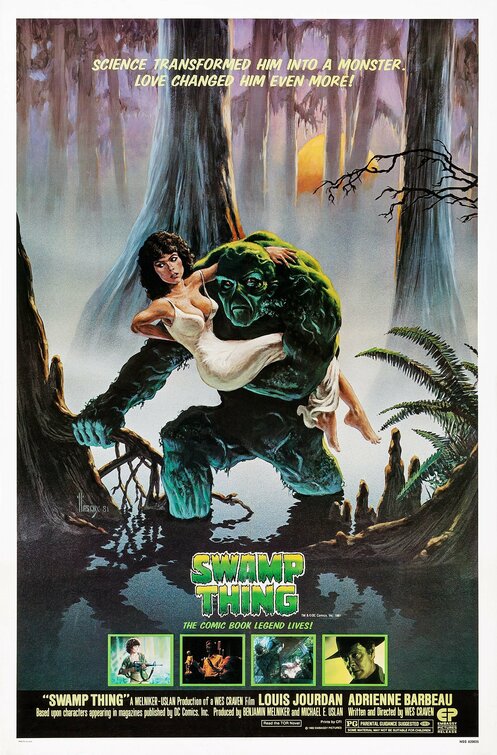
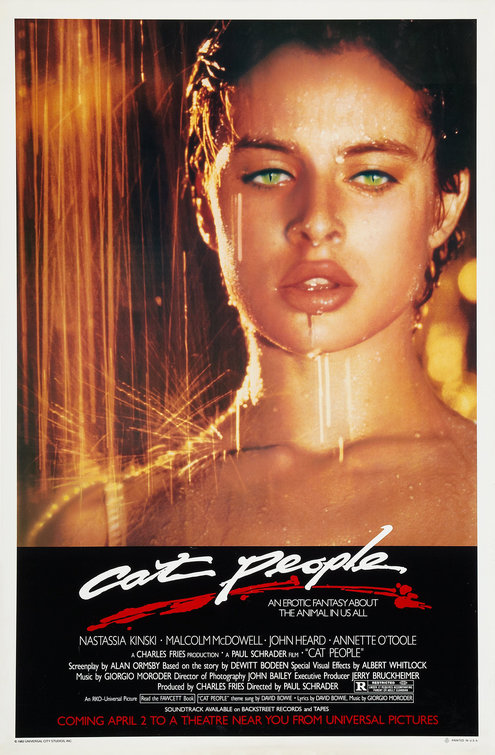

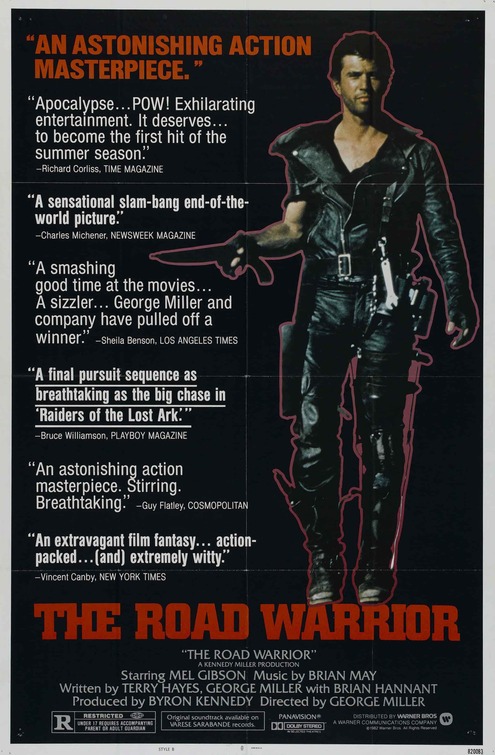

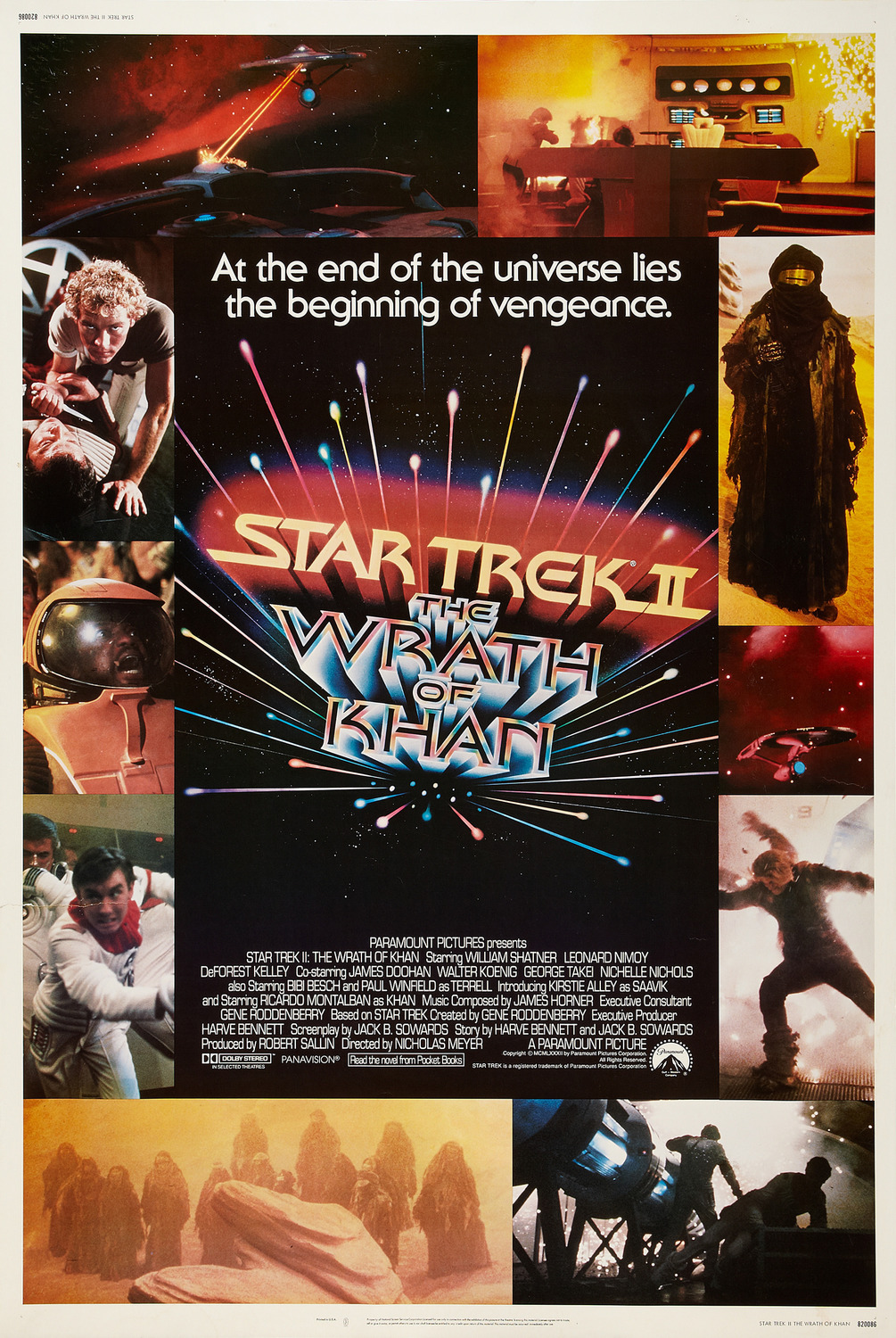
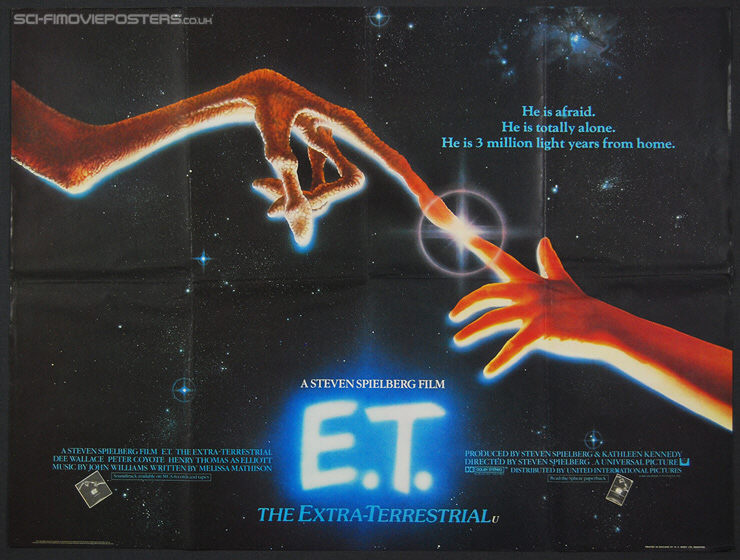
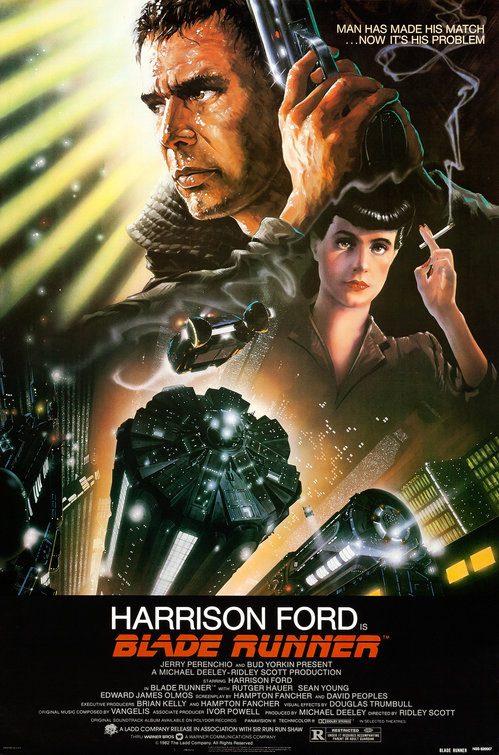


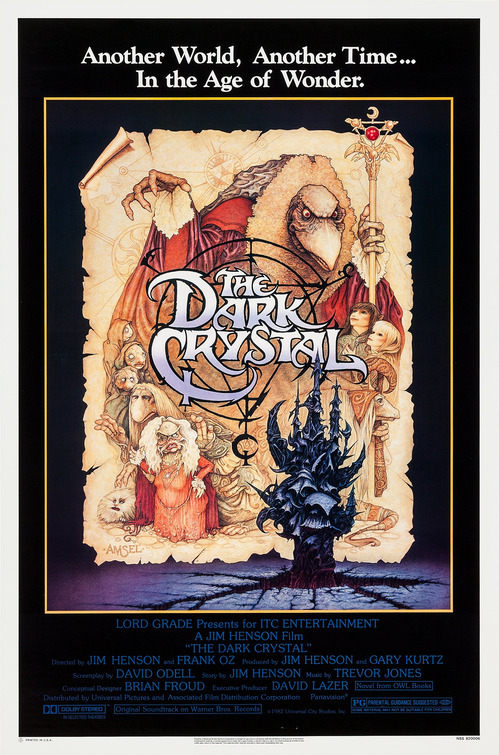
No comments:
Post a Comment